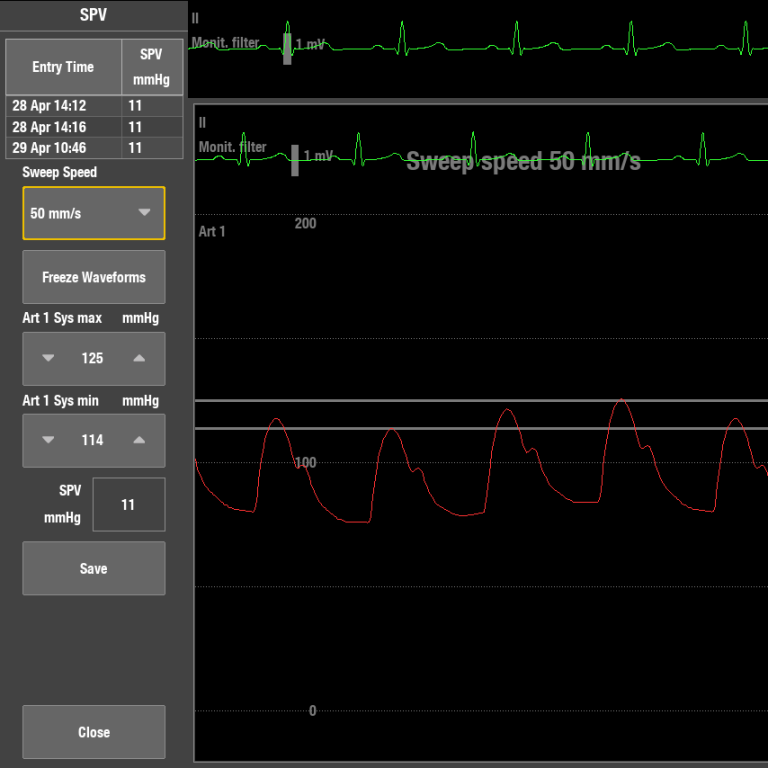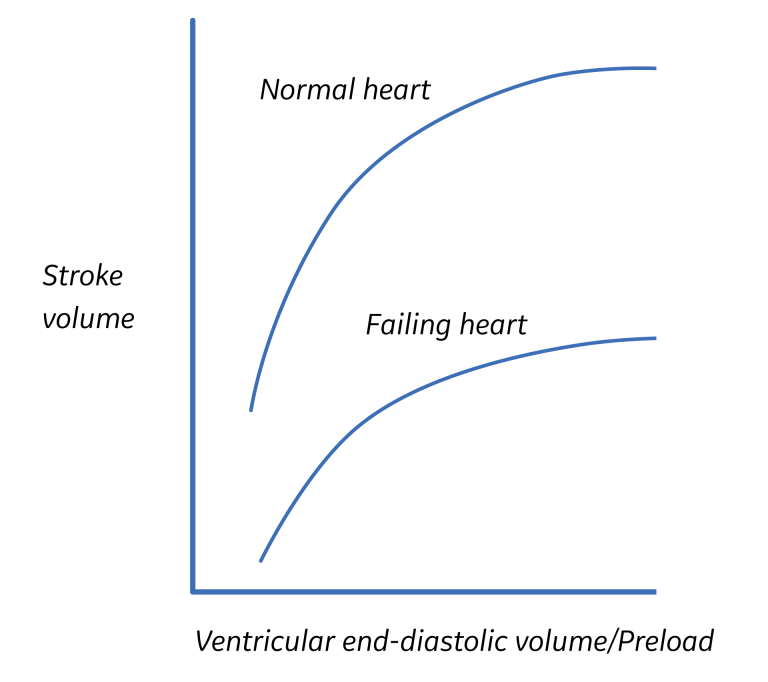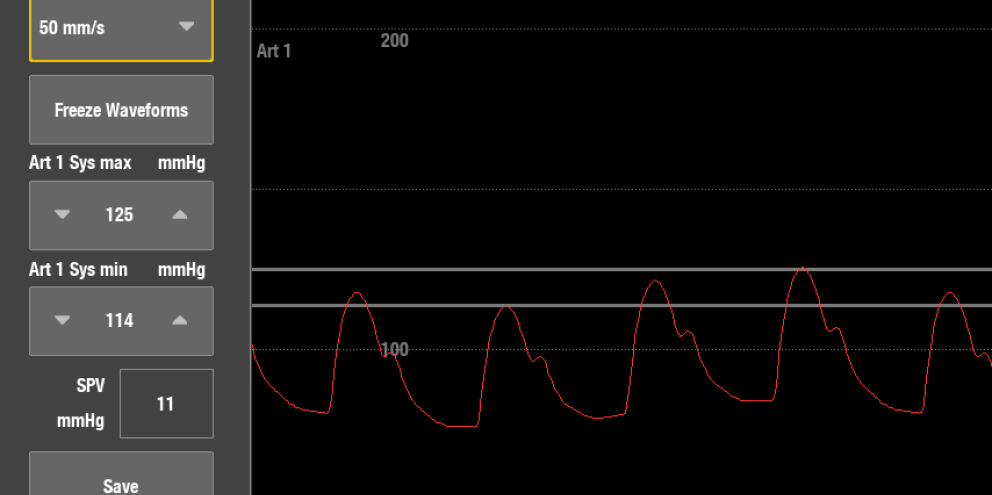What is arterial pressure variation?
Positive pressure ventilation causes blood pressure changes in the chest cavity: inspiratory phase increases the pressure and expiratory phase decreases it. The magnitude of these changes is dependent on the fluid status of the patient. In hypovolemic patients these swings are higher in amplitude compared to normovolemic or hypervolemic patients. This is a well known phenomenon.
The arterial pressure variation algorithm looks for respiratory changes in the arterial blood pressure. It only uses the arterial blood pressure analysis and does not use any other parameter to recognize the respiratory cycle.
Arterial pressure variation can be used to assess fluid responsiveness continuously and without extra procedures.¹
PPV and SPV in GE patient monitors
Systolic pressure variation (SPV) and pulse pressure variation (PPV) reflect respiratory changes in arterial pressure during positive pressure ventilation.¹ ² ³
SPV and delta Pulse Pressure (dPP) are calculated from the invasive arterial blood pressure using the following equations:
SPV [mmHg]= SBPmax - SBPmin
PPV [%]= (PPmax - PPmin) / [(PPmax + PPmin) / 2] * 100


Values of SPV are represented in mmHg whereas PPV is a percentage. Both numbers are computed once every five seconds. The measurement is continuous and trended in the GE patient monitor*. When the monitoring is started it requires two respiratory cycles before the values are shown on the screen.

The arterial pressure variation algorithm analyzes the acquired invasive arterial blood pressure signal and, therefore, it does not require any further equipment besides the invasive blood pressure measurement kit.

In the GE CARESCAPE™ patient monitor it is also possible to manually measure SPV by using a dedicated menu and cursors*. Each measurement can be saved to follow the changes in the patient fluid responsiveness.
* Available in the CARESCAPE monitors with software ESP v2 only.
Why monitor SPV/PPV?
One of the most common questions regarding hemodynamics has to do with the patient’s fluid responsiveness: Will the patient’s stroke volume and cardiac output improve with fluid resuscitation?
In hypovolemic conditions respiratory variations in stroke volume are higher than normal.¹ However, being responsive to fluid therapy does not mean that the patient really needs fluid.
Monitoring arterial pressure variation, i.e. SPV/PPV, helps to answer the question of fluid responsiveness and can be used to guide fluid expansion therapy.⁴ SPV/PPV parameters cannot, however, indicate what type of fluid is the most suitable for the therapy.

The Frank-Starling curve describes the relation between stroke volume and preload. The steeply rising section of the curve represents the area where the patient is responsive to fluid therapy. It means that a small increase in preload results in a large increase in stroke volume and cardiac output. On the other hand, when moving to the flat area of the curve, the change in preload hardly makes a difference in stroke volume.
Threshold value suggested in the literature
High values of delta pressures indicate responsiveness to fluid therapy. The values shown in literature for PPV to indicate fluid responsiveness range from 10 to 15%.¹ ⁵ If the value is over the limit, it is suggested that the patient is responsive to fluid loading.
Limitations
There are a few limitations with the clinical use of PPV and SPV. Firstly, they are only reliable when the patient is mechanically ventilated, with adequate tidal volume.
Secondly, PPV and SPV are reliable only with patients without cardiac arrhythmias. The algorithm uses the monitored ECG signal for cardiac arrhythmia recognition.
Since SPV and PPV values are calculated from the invasive arterial blood pressure waveform, they are reliable only if the readings of the invasive blood pressure are reliable. The invasive blood pressure transducer needs to be at the mid-heart level, adequately zeroed, and there should not be air in the transducer dome or in the catheter line. The analysis is done to the invasive blood pressure channel, which is labeled “Art” in the patient monitor.
References
- Michard, F. Changes in Arterial Pressure during Mechanical Ventilation. Anesthesiology (103) 419-28 (2005).
- Perel, A., et. al. Systolic blood pressure variation is a sensitive indicator of hypovolemia in ventilated dogs subjected to graded hemorrhage. Anesthesiology (67), 498-502 (1987).
- Michard, F., et. al. Clinical use of respiratory changes in arterial pulse pressure to monitor the hemodynamic effects of PEEP. Am J Respir Crit Care Med, (159), 935-9 (1999).
- Preisman, S., et. al. Predicting fluid responsiveness in patients undergoing cardiac surgery: functional haemodynamic parameters including the Respiratory Systolic Variation Test and static preload indicators. Br J Anaesth (2005).
- Deflandre, E., et. al. Delta down compared with delta pulse pressure as an indicator of volaemia during intracranial surgery. Br J Anaesth, 100, 245-250 (2008).
Additional resources
For more information about CARESCAPE monitors, please refer to the User Manual of the device.








